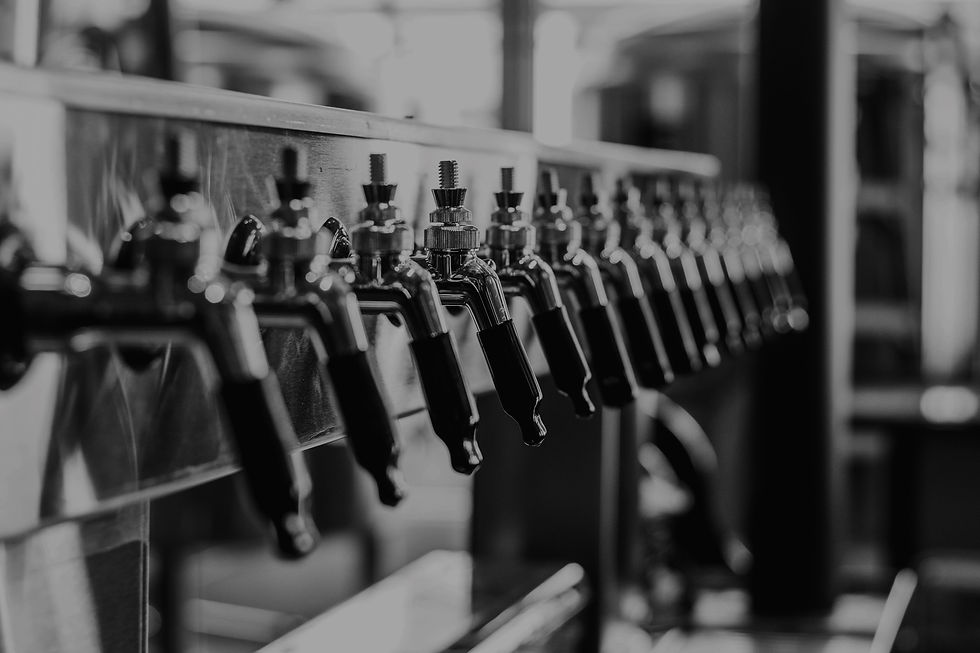The Ultimate Guide to Mastering Your Draft System: Unveiling the Secrets of Beer, Cocktail, and Coffee Serving Systems
- aric05
- Dec 5, 2024
- 3 min read
Draft systems play a key role in the beverage industry, allowing you to serve everything from ice-cold beers to luscious cocktails and rich coffees. Whether you're a home bar aficionado or a seasoned professional, knowing how draft systems operate can enhance your beverage skills and improve your guests' experience. In this guide, we will explore the essential components, functions, maintenance, and use of beer, cocktail, and coffee serving systems.

Understanding Draft Systems
Draft systems are built to dispense various beverages, primarily beer, cocktails, and coffee, from a keg or other storage containers to your glass or cup. This process involves mechanical components, each serving a unique purpose to guarantee a smooth pouring experience.
The key components of draft systems typically include:
Kegs: These storage containers hold beverages under pressure, keeping them carbonated for an optimal pour.
CO2 Tanks: Carbon dioxide tanks push the liquid from the keg through the lines, maintaining the right level of carbonation.
Draft Lines: Tubes that carry the beverage from the keg to the tap.
Taps: The service point where the beverage is dispensed.
Coolers: These maintain the beverage's temperature, ensuring the best flavor and freshness.
Familiarity with each component's role is essential for mastering your draft system.
Main Parts of Beer Draft Systems

Kegs
Kegs come in various sizes, with the most common being 1/2 barrel (15.5 gallons), 1/4 barrel (7.75 gallons), and 1/6 barrel (5.17 gallons) kegs. For instance, a standard 1/2 barrel keg can produce approximately 165 12-ounce beers. Choosing the right keg size can significantly impact your serving efficiency and variety.
CO2 Tank
The CO2 tank is vital for maintaining the beer's carbonation. Proper pressure regulation is necessary to avoid over-carbonation, which can lead to excessive foaming. Typically, a CO2 pressure of 10-14 psi is ideal for most beers.
Draft Lines
Made from food-grade materials, draft lines vary in length and diameter. A typical draft line diameter of 3/16 inch is ideal for most setups. The length of the lines affects the flow rate and foam level, so it's essential to calibrate these factors.
Taps
Taps come in many styles, including traditional faucets and modern digital ones. The design and function of the tap can play a huge role in the user experience. A well-designed tap can reduce foam while ensuring a perfect pour every time.
Cooler
A reliable cooler is essential, especially in warmer climates. Beer should be served at an ideal temperature of around 38-42°F to enhance its flavor profil and prevent foaming..
Getting to know these components will help you troubleshoot issues, maintain your equipment, and deliver an exceptional beverage experience.
The Functions of Draft Systems
The primary function of beer draft systems is to transport and dispense the liquid while preserving its carbonation and taste. Proper pressure control is critical; too much CO2 can create a foamy mess, while too little can result in flat beer.
Moreover, draft systems allow for serving a wide range of beer styles, from lagers to stouts. Each type requires specific temperatures and pressures to maintain quality. For example, lagers are best served around 38°F, while stouts are typically served at a warmer 45°F.
A basic understanding of these functions will benefit any beer lover, home brewer, or bar owner.
Elevating Your Beverage Experience
Mastering your draft system goes beyond understanding its parts. It's about using that knowledge to craft enjoyable drinking experiences. Whether you're serving beer, cocktails, or coffee, knowing how to efficiently manage your systems will significantly enhance your beverage service quality.
Investing time in understanding draft systems pays off with flavorful pours, minimal waste, and satisfied guests. Embrace the details of your serving systems, and you'll see a marked improvement in every sip. Remember that a well-poured drink can make all the difference—cheers to your journey in becoming a draft serving expert!



Comments